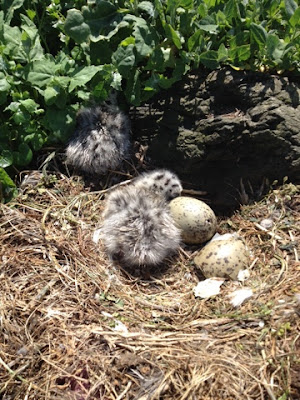...which literally translates as hello three-toed gull, but really just relates to a few French-ringed Kittiwakes at Portreath this afternoon. 'Tridactyle' also relates to the Kittiwake's scientific name (
Rissa tridactyla), and there are many other tridactyl animals, including a sloth, a giant-anteater, a woodpecker, a Jacamar (related to kingfishers), an Australian marsupial, a plume moth, a polychaete worm, an extinct scorpion-like arthropod and, oddly, Plum Powdery Mildew!
But back to Kittiwakes... So a sunny afternoon just cries out for a trip to the cliffs to check out the satellite colony at Portreath, with the main colony only viewable from sea. But even this small gathering of birds was worth an extended look, and no fewer than four French-ringed birds were recorded. All of these birds will have come from Point du Raz in France, so it'll
be interesting to see when they were ringed and if they have interesting
histories...
Two of these appeared to be 'squatters' which aren't actively breeding but just prospecting. Birds will exhibit this kind of behaviour until a nesting 'stump' becomes available which they will occupy. Excuse the poor photo quality, but phone-scoping at 60x magnification in heat haze is never going to produce the best results!
 |
| The satellite colony at Portreath is up and left from the beach in this view |
 |
| OWM-YGO looks to be a settled breeder |
 |
| ONM-OLY was seen on several 'stumps' so is more likely a squatter |
 |
| OBM-WBG was probably also a squatter |













